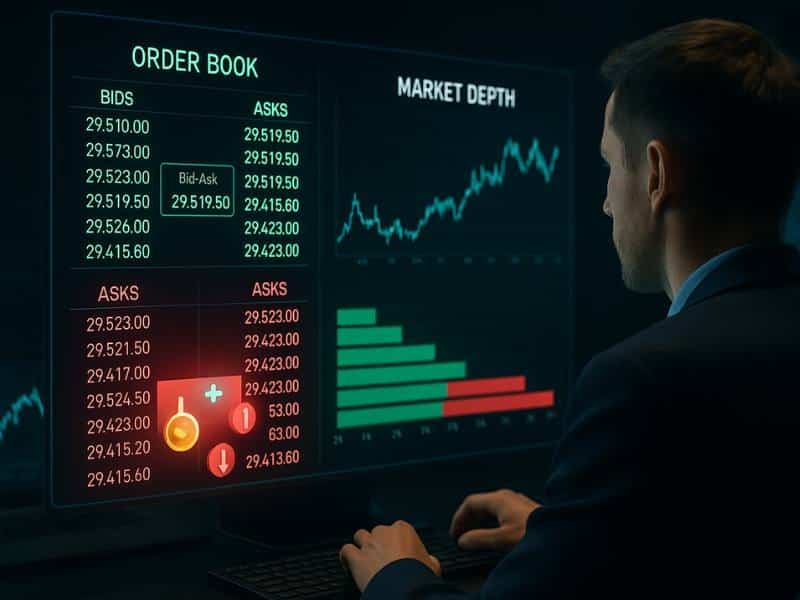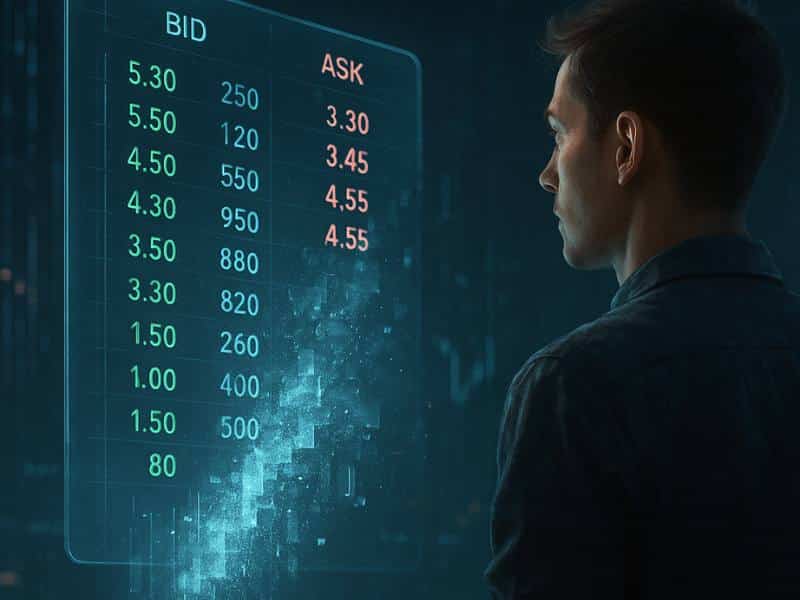Crypto's Sneaky Danger
When you're in crypto, price swings aren't the only thing to watch out for. Low liquidity can also mess things up. A lot of people look at trading volume to get a feel for a market, but that can trick you.
You've probably seen big volume numbers on places like CoinGecko or Binance. It seems good, but volume just tells you how much trading happened. It doesn't tell you who's trading or if it's real. Sometimes, people use bots to fake interest and trick other traders. This is called wash trading.
That’s why liquidity is so important. It shows if you can buy or sell without causing big price changes. A crypto might say it trades $50 million a day, but if a tiny $1,000 order moves the price a lot, watch out. Low liquidity can trap you, making it easy to get in but tough to get out without losing cash.

Liquidity Matters More Than Volume
Trading volume can fool you. Liquidity gives you a clearer picture.
Liquidity tells you how much real money is moving in a market. When liquidity is high, big trades don't move prices around too much. When liquidity is low, prices can jump fast, and traders might lose money if they think the market is steady.
Before you trust trading volume, check out the market's liquidity.
How to Find Real Market Activity on Exchanges
When you're trading on an exchange, take a look at the order book to see how easy it is to buy or sell a coin. Here’s what to keep in mind:
- Bid-Ask Spread - This is the difference between the highest price a buyer will pay and the lowest price a seller will accept. If it’s small, the market is in good shape, and trades should happen easily. A big difference could mean there's not much activity, and even small trades can cause price changes.
- Market Depth - Check out the buy and sell orders at different price levels. Exchanges usually show how much is available within a certain range of the current price (like 2%). If there are many orders close to the current price, you can place orders without much trouble. If not, your trade might move the price a bit.
- Consistency - Don’t just check the activity once! See how it changes over time. A healthy market has activity that stays pretty steady. If you see quick spikes that disappear fast, it might be market tricks or just short-term buzz, not real activity.

How to Check Real Liquidity on Decentralized Exchanges
On decentralized exchanges (DEXs), liquidity pools are key. They show if a market is solid or just faking it. Good thing tools like GeckoTerminal and DexTools let you easily see what's happening.
- Pool Size - First, check the pool size. This tells you how much ETH, USDT, or other stablecoins are paired with the token. If a pool has only about $200,000 but the project says it has $2 million in daily trading volume, be careful. That means the volume is probably fake, and the liquidity can't actually handle real trades.
- Volume and Liquidity - Then, compare the trading volume to the pool size. If the volume is high but the liquidity is low, the numbers are likely wrong. Small trades could cause big price changes, and traders could end up losing a lot of money.
- Is It Staying? - Last, see if the liquidity is stable or running away. If liquidity leaves a pool fast, it can destroy a token's price quickly. Good projects keep liquidity providers around for a while, but risky projects have money flowing in and out fast, which makes the market risky.

How to See Through Fake Crypto Liquidity
If you're in crypto trading, watch out for fake liquidity. Some people manipulate the market or use bots to make it look like there's a lot of trading going on through big orders. Traders might see this and think there's real interest.
But here's the catch: when real trading starts, those big orders might just vanish, showing the support wasn't actually there.
Smaller traders can be tricked into thinking a market is strong, only to learn the hard way that it isn't.
Trade Smart: Simple Ways to Dodge Liquidity Traps
It's not that hard to spot liquidity traps. Here’s how to trade and stay safe:
- Play it Safe - Markets are usually steady when there's enough liquidity. So, stick with assets that are usually liquid.
- Keep an Eye on the Numbers - Small differences between buy and sell prices are usually a good sign. But big gaps and few orders? That's a red flag.
- Size Matters - Before you trade, see if the token’s pool can handle your trade size. A small pool can mean big price swings.
- Watch for Red Flags - Be careful with tokens or projects that fake trading activity or have wild price swings. Crypto often repeats itself.
- Plan Your Moves - Tools like TradingLite or TensorCharts use heatmaps to show big orders. These charts can give you an idea of the liquidity situation.
Keep these tips in mind to avoid liquidity traps and trade easier.

The Main Point: Liquidity Matters Most
Trading volume can be faked, but it's tough to fake real liquidity.
Think of it like this: volume is just background noise, while liquidity gives you real information. It separates a fake market from one that can handle your trades.
Before you trade, ask yourself:
Can I get out of this trade without losing a lot of money?
Who am I really trading with?
If you don't know the answers, it's best to wait. Keep in mind, in crypto, the loudest projects aren't always the best. The traders who win are the ones who pay attention to liquidity, not the hype.
